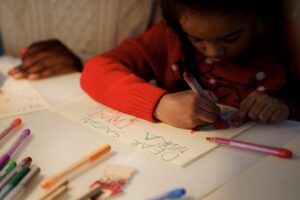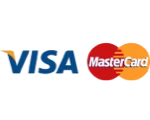Learning to write Arabic letters is one of the most important educational skills that a child needs. Learning to read and write in general depends on learning how to write letters, and learning to write Arabic letters and learning to read them cannot be separated, as it is an integrated process based on the skills of reading and writing, and there are stages that must be mastered in order to master Child writing letters.
Stages of teaching writing Arabic letters for children:
First – the reading stage:
At this stage, the child learns to read the letters by listening to their sounds letter by letter, he notices the way they are pronounced, and the letters to be learned are distinguished in certain colors at the beginning, middle and end of the word, until all or most of the letters are memorized.
Secondly, the stage of writing accompanied by reading:
In the midst of the child learning letters and reading, it is appropriate for him to learn how to write letters, after completing their reading and distinguishing them well from each other. This is done through the following steps:
1- Drawing letters in an abstract and faint color without specifying their position at the beginning, middle or end of a word.
2- The student reads the letters well: the child passes his pen over each letter to make the letter appear more clearly. Repeat the previous process several times, and with all letters.
3- Writing or drawing letters at the beginning, middle and end of the word, repeating all the previous steps.
4- Ensuring the safety and correctness of the child’s writing of letters.
Ways to teach the alphabet to children:
1- Read aloud:
Reading some stories to the child arouses his enthusiasm and makes him eager to learn the alphabet. Parents must realize that reading aloud to children at an early age is not too early. Some alphabet books suitable for children can be used so that they can recognize and learn the letters by associating the alphabet with some characters and shapes.
2- Teaching aids:
There are some useful educational aids for teaching the letters of the alphabet and helping the child to memorize them, for example, what is known as sandpaper letters, which are educational aids used with children in the pre-writing stage. Start writing the letter and then the direction of writing, and even writing the letter completely, and this wonderful educational tool can be combined with sounds, when the child writes the letter, the one who teaches him can pronounce the letter so that the child can link the letter with its pronunciation. The great benefit of sandpaper letters is evident by teaching the child the shapes of letters and how to write and pronounce them.
How to teach children Arabic letters:
1- Synthetic or molecular method:
In it, the child first learns the Arabic letters with their names and forms in an orderly manner, then he is taught the movements, distinguishing the open, plucked, broken and consonant letters, and often the teacher begins to teach similar letters in writing such as (b, t, th) and (j, h, k) and so on, He may also teach the letters according to their exits in the mouth, such as the oral letters (b, m, and), then the dental ones (t, y, i), then the ringed letters (a, g, h, kh) and then begin to teach the combination of letters together letter by letter to form words correct, and then links these words together to make short, understandable sentences.
2- Analytical method:
This method depends on analyzing words into letters, and then teaching the child these letters. At first, the child is taught the word by showing him some of the words he knows in front of him, and he links their pronunciation with their shape and meaning, so he analyzes the word into letters and then learns these letters, and this method enriches The child stops focusing on spelling, which leads to a delay in reading and writing.
3- Use of books and pictures:
Children can be taught letters using educational books for children. These books contain pictures that are linked to a specific letter, and letters can be linked to fun stories and cartoon characters that children prefer.
4- Learning by touching the letter:
The method of learning by touch is one of the effective methods, as some children have the ability to learn by touch skill, and this method includes a great deal of fun and excitement, and is based on bringing letters made of cardboard or sandpaper, where the child touches the letters with his hands to memorize their shapes, This method combines the skills of visual learning and sensory learning.
5- Learning by singing:
Children can learn the letters by singing, as the mother or the nanny sings the alphabet song, and with time the children begin to chant the song on their own, and this method is one of the fun and fast ways.
6- Learning by forming letter shapes:
The child can be encouraged to form letter shapes using several methods, such as using his body, using play dough, sticks, or any available method.
In addition to the aforementioned, it is possible to start teaching the child the letters by teaching him the first letter of his name.
Training in drawing alphabets with dots and movements:
The teacher (the mother or the educator) has to show these letters to the children and draw them in order to prove the letter in the child’s memory. He clarifies the letter written in dots and then writes the letter to the child in his notebook, and makes him fill the page with copies of the letter, as well as show him the letter’s name, and repeat the process on All alphabets.
The teacher should focus on the letters whose drawing differs in the beginning of the word from its middle and the end, which are: A, G, K, H, Y, T.
As for the open, broken and joined letters, the teacher writes these letters to the children on the board with their different movements, and shows them the position and name of each movement:
The fatha is a small line above the letter, and it is called a fatha because you open your mouth while reading the open letter. Then he makes them read them on their own one by one, write them in their notebooks with movements and fill an entire page with copies of them at home, then test their mastery of pronunciation and writing. After the children have mastered the open letters, the teacher writes these exercises for them on the board.
Open letter exercises:
• Form the following words with the Fatah movement, as in the first example:
Take, draw, advise, go, draw, wash, explain, hit.
Connect all two similar letters with a line:
as a noun
nick
will ask
• Read the following words, paying attention to the movement of the letter in the fatha:
He fell, plucked, saw, persevered, ate, sowed, reaped.
• Cut the following words into their letters as in the first example:
took: took
planting:
to withdraw:
excel:
burial: burial
The teacher follows the same method mentioned with the damma and kasra vowels. In the broken letters, he comes up with examples that start with an open letter, then add a broken letter to it, then include a third letter, and so on…. Such as:
E: despair
B: yb: will wear
Note: A kasra is defined as a small line placed under a letter, so named because you break your mouth when you read the broken letter. In the combined letters, we follow the same method as the previous one, except that the examples will be made up of the three movements such as: pushed, sustenance, hit, dyed, expelled, squeezed.
Consonants: The teacher writes these letters to the children on the board with the sukoon and teaches them to pronounce them letter by letter, then moves on to the gradual examples.
any order.
T: To follow.
H: carry.
Exercise: Underline the words that are similar to the first word on the same line:
Example: to sow: to sow, sow, sow, sow.
to be hit: to be hit, to be hit, to be hit.
to cook: to cook, to cook, to cook, to cook.
works: works, works, works.
General: Parents should show interest in the child’s writing or drawings and praise him, as this shows him the parents’ appreciation for his efforts, and to enable the child’s writing skill in previous years, and paste it in a file or notebook using cardboard, and put it in the home library. Parents should also allow their child to experiment and explore rather than giving them commands, such as allowing them to scribble all over the paper, and encourage them to write by offering unique rewards.







